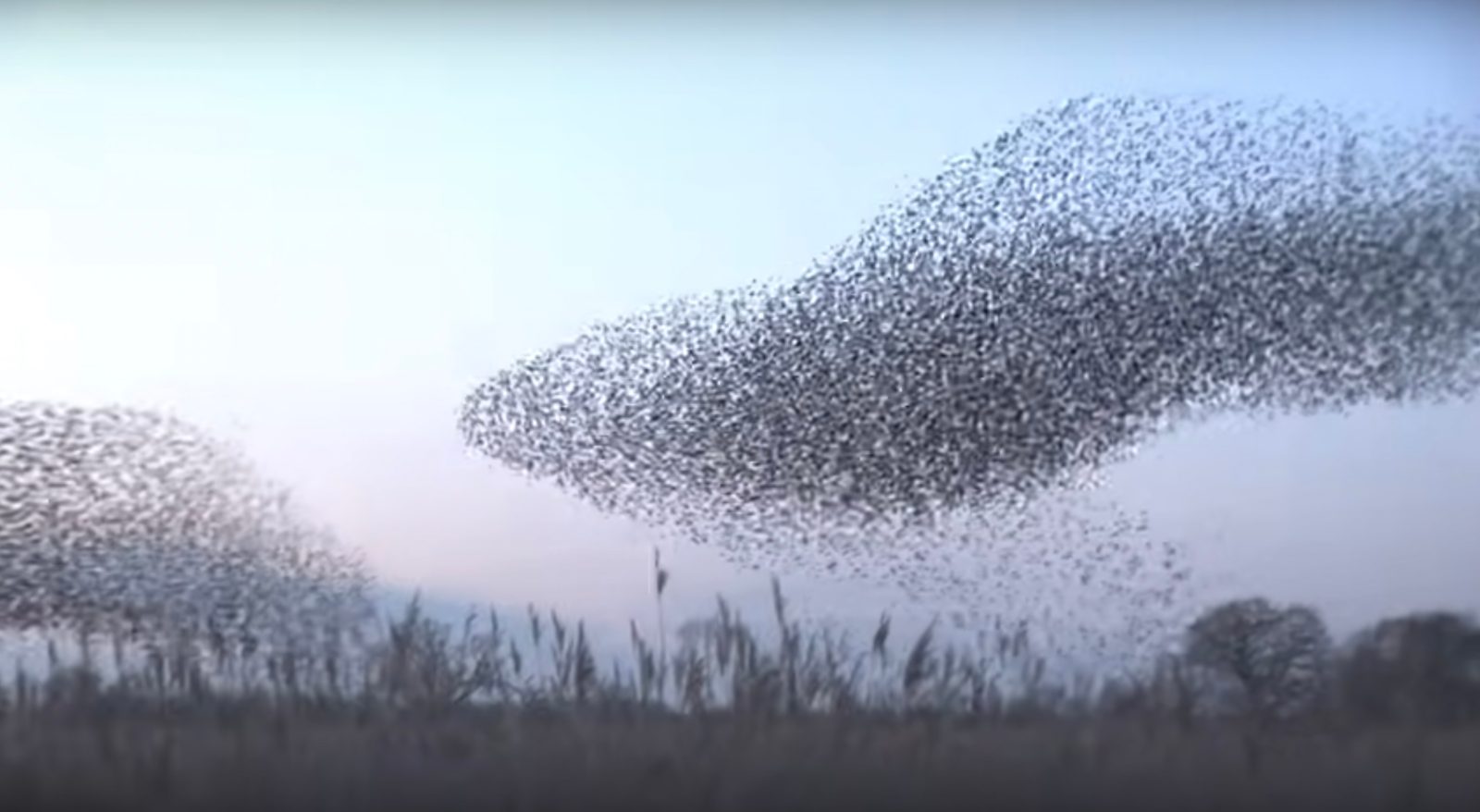
Bird watchers in the UK were outraged at seeing a drone fly in and break up a recurring mass flight phenomenon by starlings known as murmurations. The interruption last week near Brighton’s pier was also denounced for the dangers that the craft’s propellers posed to the performing creatures.
The intrusion sparked indignation from people who’d been observing the natural aerial spectacle, and were angered to see the drone hover over and scatter the starlings. Several reportedly took to social media to denounce the act and offer up strategies for halting pilots spotted near areas where birds often perform murmurations. Those pique-filled ideas ranged from verbally accosting invasive UAV operators around the events to “knocking the controller out of their hand.”
Local media accounts say the birds eventually resumed the hypnotic mass swooping – which some people compare to an aerial dance – though that did not alleviate the ire of people who’d witnessed the drone’s arrival. The vexation was all the stronger in the offending flight being only the latest UAV disrpution of murmurations.
Even the august Royal Society for the Protection of Birds (RSPB) weighed in to issue a reminder for drone pilots to steer well clear of recurring mass bird swarms.
“Starling murmurations are an incredible winter spectacle, and one many people are keen to capture on camera,” an RSPB spokesperson told The Argus. “The use of drones near murmurations can risk disturbing or injuring starlings while they murmurate, and goes against the guidance on drone use around wildlife issued by the Civil Aviation Authority.”
Murmurations occur in winter months when tens of thousands – at times over 100,000 – converge on specific areas, including Brighton’s pier, where they perform synchronized mass flights together as darkness descends.
It’s thought the collective swoops are in part a defensive mechanism to deter natural enemies like hawks from attacking. But experts also say the mumurations (which may have gotten the name from the muttering sound of so many beating wings) are a way of generating heat against the cold night ahead. It’s been calculated the temperatures in the air starlings swoop through will often increase by a few degrees during their movement.
In addition to disrupting or ruining a moment of natural wonder, fans of murmurations also dislike approaching drones for the danger they present to the large numbers of swooping birds. That’s become even more a concern with starlings, whose population has “fallen by more than 80 per cent in recent years, meaning they are now on the critical list of UK birds most at risk,” notes the RSPB. For that reason, it says, UAVs must stay well away from known murmuration spots.
“They rely on the safety of roosting sites like Palace Pier to help protect them from the harsh weather and predators in winter,” the RSPB spokesperson said. “If a drone were to collide with the birds and cause injury, it would potentially be an offence under the Wildlife and Countryside Act 1981.”
FTC: We use income earning auto affiliate links. More.




Comments